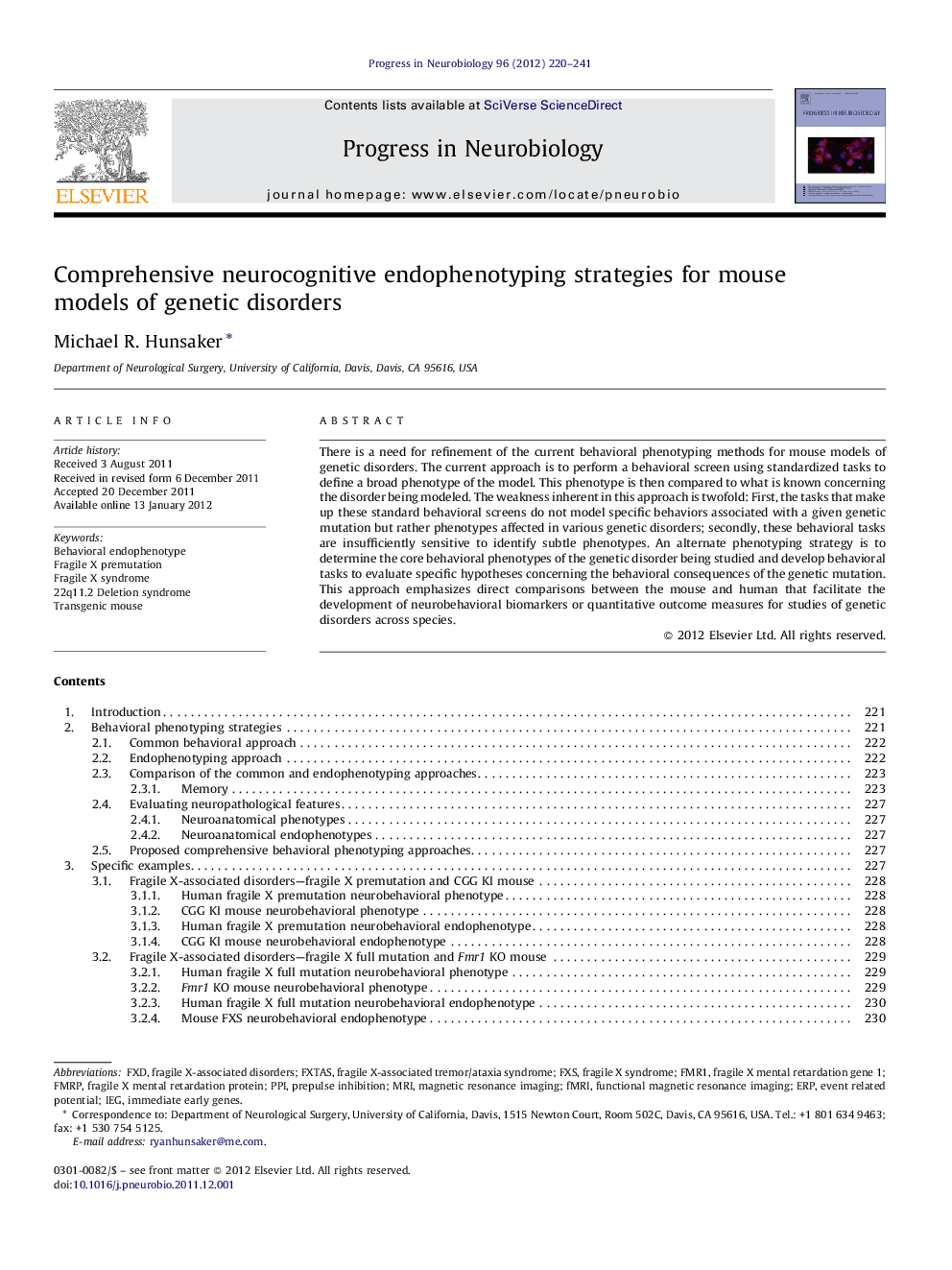| Article ID | Journal | Published Year | Pages | File Type |
|---|---|---|---|---|
| 4353430 | Progress in Neurobiology | 2012 | 22 Pages |
There is a need for refinement of the current behavioral phenotyping methods for mouse models of genetic disorders. The current approach is to perform a behavioral screen using standardized tasks to define a broad phenotype of the model. This phenotype is then compared to what is known concerning the disorder being modeled. The weakness inherent in this approach is twofold: First, the tasks that make up these standard behavioral screens do not model specific behaviors associated with a given genetic mutation but rather phenotypes affected in various genetic disorders; secondly, these behavioral tasks are insufficiently sensitive to identify subtle phenotypes. An alternate phenotyping strategy is to determine the core behavioral phenotypes of the genetic disorder being studied and develop behavioral tasks to evaluate specific hypotheses concerning the behavioral consequences of the genetic mutation. This approach emphasizes direct comparisons between the mouse and human that facilitate the development of neurobehavioral biomarkers or quantitative outcome measures for studies of genetic disorders across species.
► Batteries of behavioral tasks often do not identify deficits in transgenic mice. ► Hypothesis driven collections of tasks efficiently characterize subtle behavioral phenotypes. ► Behavioral endophenotypes are quantitative traits modulated by dosage of gene mutations. ► Behavioral endophenotypes can be used to define behavioral biomarkers for treatment studies.
